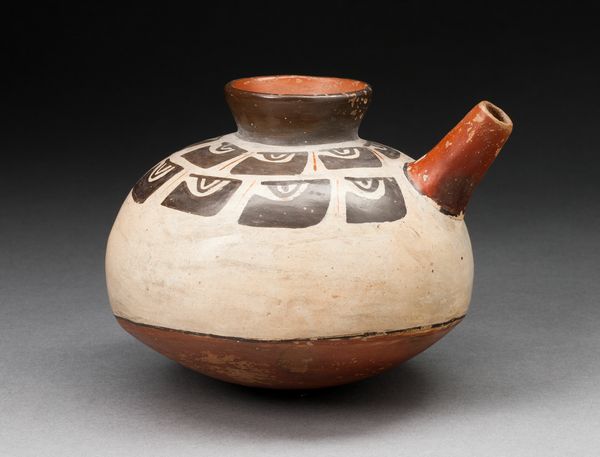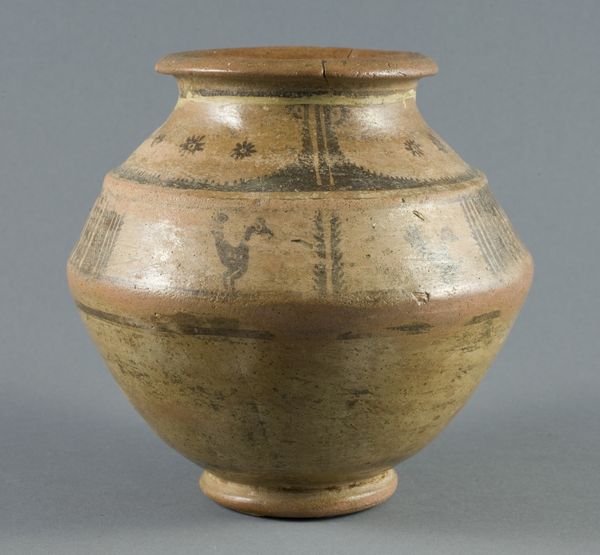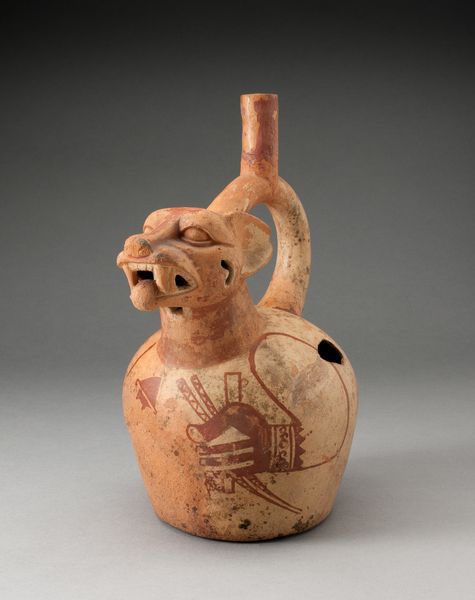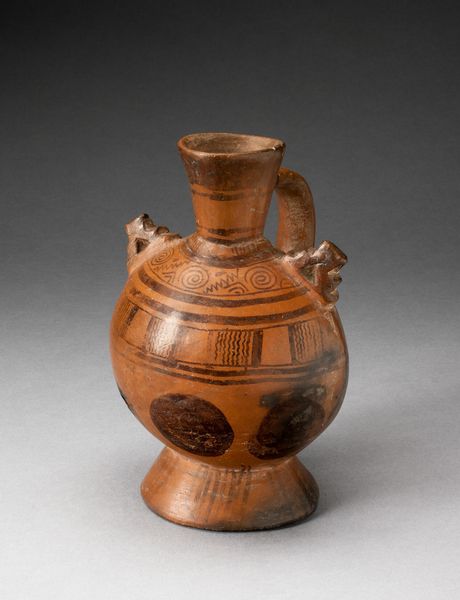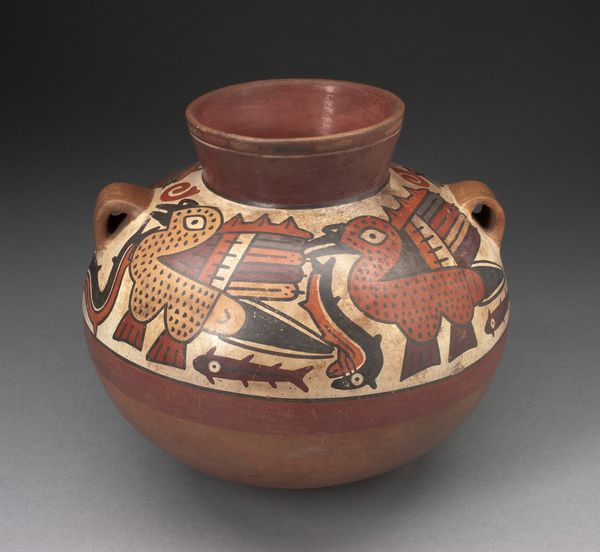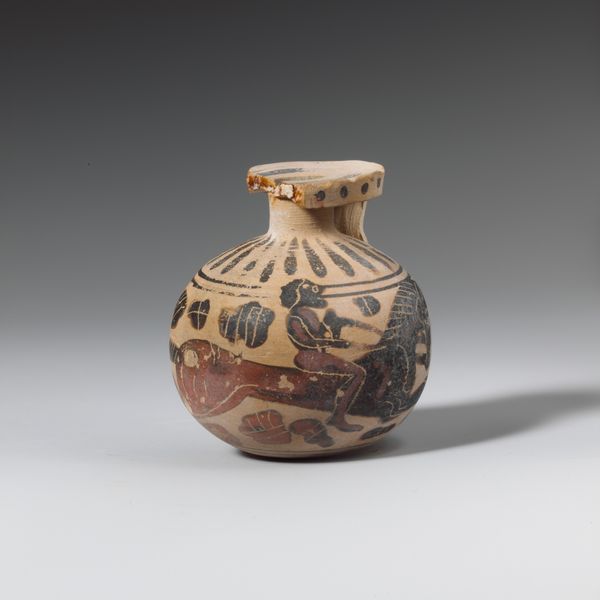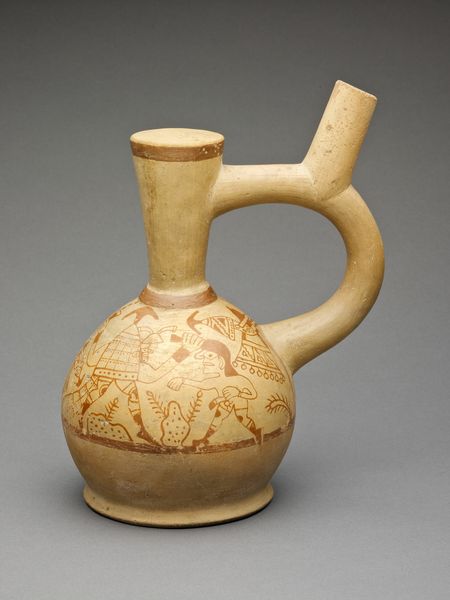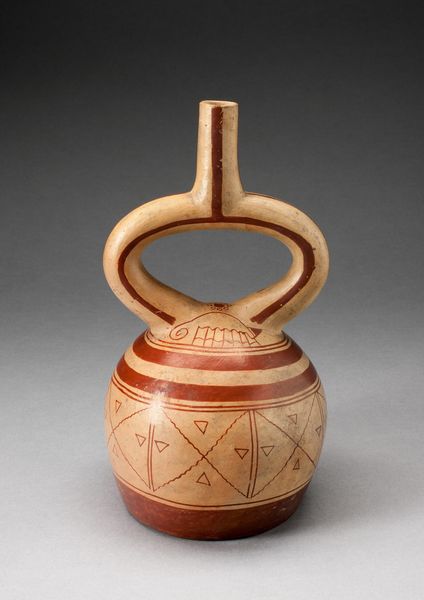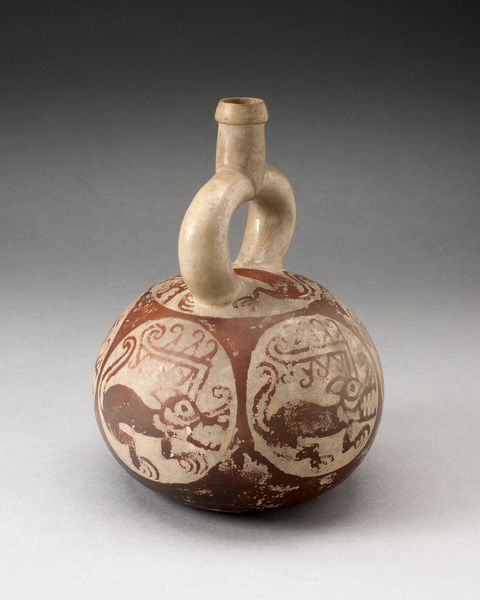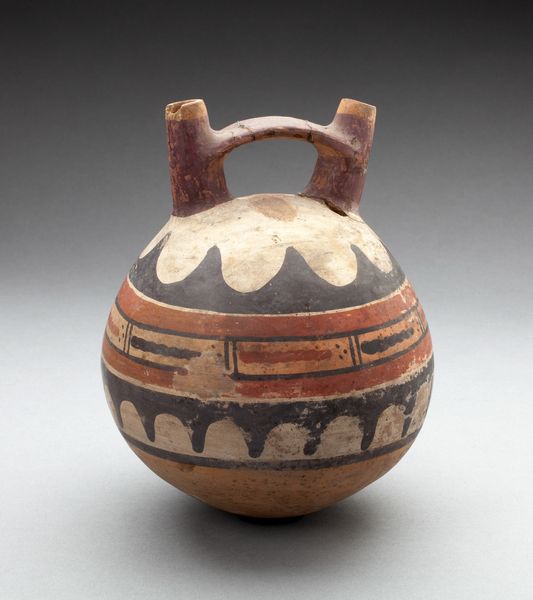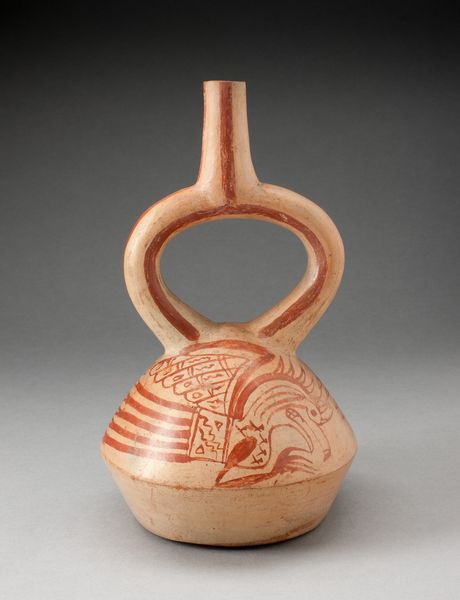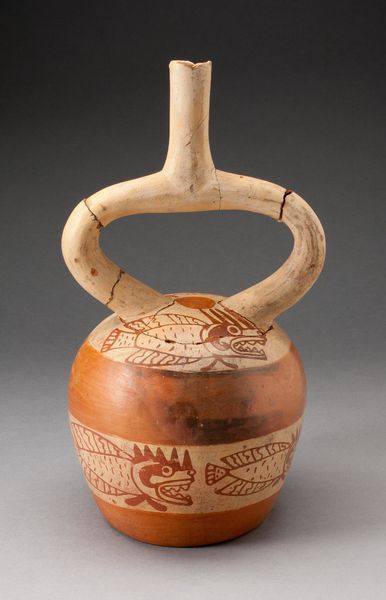
ceramic, terracotta
#
ceramic
#
figuration
#
ceramic
#
terracotta
#
indigenous-americas
Dimensions: H. 22 cm (8 5/8 in.)
Copyright: Public Domain
Editor: This is a Moche ceramic vessel, specifically a Handle Spout Jug with Quadruped Motifs, dating from around 100 to 500 CE. The depictions of the animals seem quite dynamic, despite being somewhat stylized. How might this have functioned within its cultural context? Curator: That’s a great question! Consider the social structures of the Moche people. The elite often commissioned elaborate ceramics for ritual use, and even as offerings for burial sites. These vessels weren't merely decorative; they served as powerful conveyors of status and religious belief. Editor: So, these quadrupeds...were they symbols of power? Curator: Possibly. The animals represented are highly stylized; not entirely naturalistic. We have to remember that these motifs would have resonated with the Moche people. What could these animal figures signify to the broader community, beyond the ruling classes? Editor: I hadn't thought about a broader public interpretation. Could the widespread imagery also imply these values trickled down through the social classes? Curator: Precisely! That’s one way to consider the function of the jug and the public role of art during the Moche period. Remember the repetitive band ornamentation too, repeated patterns create a certain design uniformity that can permeate culture as a whole. How did seeing these patterns influence and reaffirm society's core beliefs and hierarchies? Editor: This makes me consider its place beyond just artistry – more like a socio-political tool of visual communication. I had underestimated the jug's significance. Curator: Indeed. The Moche vessel serves as a tangible reminder of art’s integration within society. It allows a great deeper historical context than just decoration and beauty.
Comments
No comments
Be the first to comment and join the conversation on the ultimate creative platform.
